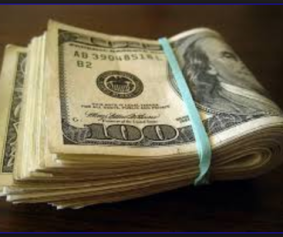Americans Are Hoarding Money, But Why?
Friday, September 5th, 2014 @ 7:47PM
Gary D. Halbert
Between the Lines
In the wake of the Great Recession and the worst financial crisis since the Great Depression, worried Americans are hoarding more cash than at any time in the last 25 years. According to the Fed, US households are sitting on $2.15 trillion in checking and savings accounts – about a 50% increase over the past five years.
And this does not include any cold, hard emergency cash that most households have hidden “under the mattress” or wherever. The question is, why?
Most analysts attribute this phenomenon to three things. First, that debt-burdened Americans have worked hard to clean up their personal finances and credit since the recession ended five years ago. Second, with savings accounts paying next to nothing and a lack of attractive investment alternatives, many American have chosen to let their checking accounts build. Third, many are holding back cash awaiting a meaningful pullback in stocks.
A report from bank consulting firm Moebs Services Inc. calculated the average balance for US consumer checking accounts was $4,436 at the end of last year – more than double the average of $2,100 over the 25 years the annual survey has been taken.
During good economic times, when unemployment and inflation are low, the average balance in consumer checking accounts is about $1,400, the survey noted. However, when times get difficult, the consumer sits on the sidelines and checking balances get larger, normally up to about $3,000, the report said.
Yet as just noted, almost five years since the Great Recession ended, average checking balances had surged to over $4,400 at the end of last year.
By contrast, free-spending Americans had allowed their checking accounts to drop to an average of just $788 in 2007, the last year before the near-meltdown of the nation’s financial system, according to the survey by Moebs.
The Moebs report, previously confidential for its clients, is fresh evidence of how the devastating economic downturn worldwide has changed consumer habits, especially on spending and saving.
As people have been cleaning up their financial houses, they have only slowly increased spending. That has helped to slow the recovery because consumer spending represents over two-thirds of economic growth.
One of the great mysteries of the post-financial crisis world is why the US has lacked inflation, given the trillions of dollars the Fed has pumped into the economy through quantitative easing. The St. Louis Fed thinks it has the answer which they outlined in a new research report published this week.
That report blames the low level of money velocity in large part on consumers and their willingness to hoard money. The report also cites the Fed’s own zero interest rate policy (ZIRP) as a reason for consumers’ unwillingness to spend.
Though American consumers might dispute the notion that inflation has been low, the indicators the Fed follows show it to be running well below its target rate of 2-2½% that would need happen before interest rates will be pushed higher.
That hasn’t happened despite nearly six years of ZIRP and the Fed pushing its balance sheet to nearly $4.5 trillion in government bonds and mortgage-backed securities.
The St. Louis Fed report ponders why the huge increase in the monetary base did not cause a proportionate increase in the general price levels (inflation) or in Gross Domestic Product. The report concludes:
“The answer lies in the private sector’s dramatic increase in their willingness to hoard money instead of spend it. Such an unprecedented increase in money demand has slowed down the velocity of money.” [Emphasis mine.]
During the first and second quarters of 2014, the velocity of the monetary base was at 4.4, its slowest pace on record. This means that every dollar in the monetary base was spent only 4.4 times in the economy during the past year, down from 17.2 [times] just prior to the recession.
This implies that the unprecedented monetary base increase driven by the Fed’s large money injections through its large-scale asset purchase programs has failed to cause at least a one-for-one proportional increase in nominal GDP. Thus, it is precisely the sharp decline in velocity that has offset the sharp increase in money supply, leading to the almost no change in nominal GDP.”
Surprisingly, the report comes very close to criticizing the Fed itself for holding short-term rates near zero for too long, and suggests this is a big reason why consumers are sitting on so much cash.
It will be interesting to see if this new report will be discussed at the next Fed policy meeting on September 16-17.
Posted by AIA Research & Editorial Staff
Categories: Between the Lines


